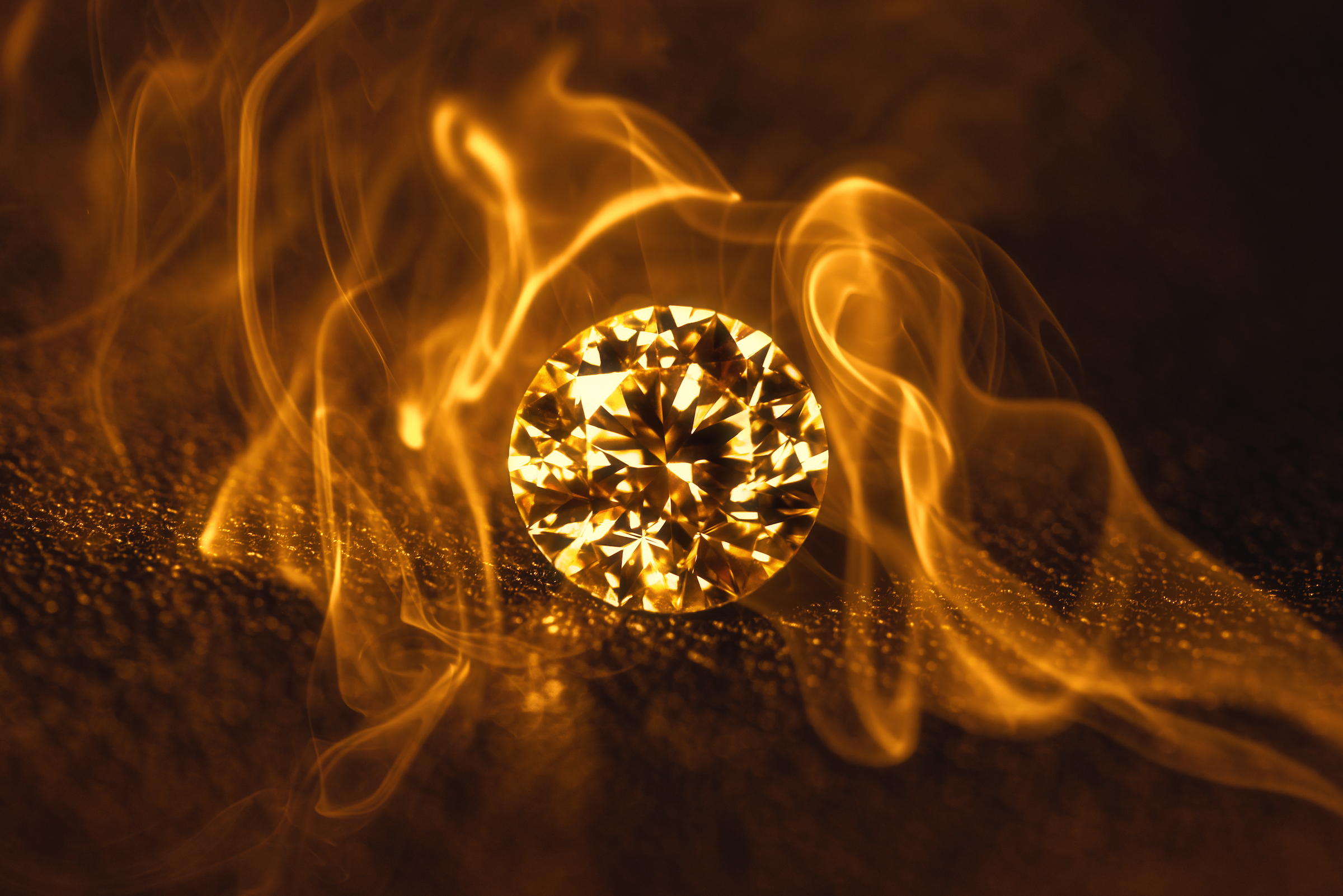Can diamonds burn?
Diamonds are made out of carbon, after all.

Diamonds are forever, or so the slogan goes. But with the proper application of heat and enough oxygen, a diamond can go up in smoke.
Diamonds are carbon, just like coal. It takes a bit more to get them burning and keep them burning than coal, but they will burn, as numerous YouTube demonstrations will attest. The trick is to create the right conditions so that a solid diamond can react with the oxygen required to fuel a fire.
"You have to convert that solid [carbon] into a gas form, so it can react with the air to make a flame," said Rick Sachleben, a retired chemist and member of the American Chemical Society.
Related: Which is rarer: Gold or diamonds?
The best way to do that? Heat — and lots of it. In room temperature air, diamonds ignite at around 1,652 degrees Fahrenheit (900 degrees Celsius), according to West Texas A&M University physicist Christopher Baird. For comparison, a high-volatile coal (coal containing a relatively high amount of easily released gases) ignites at about 1,233 F (667 C), whereas wood ignites at 572 F (300 C) or less, depending on the type.
When first heated, a diamond will glow red, then white. The heat enables a reaction between the surface of the diamond and the air, converting the carbon to the colorless and odorless gas carbon monoxide (a carbon atom plus an oxygen atom).
"The carbon plus the oxygen to make carbon monoxide generates heat; the carbon monoxide reacting with the oxygen generates more heat; the rising heat causes the carbon monoxide to move away, so more oxygen is brought in," he told Live Science.
Get the world’s most fascinating discoveries delivered straight to your inbox.
That fire, however, will amount to only a glow. Nurturing a flame on the surface of a diamond usually requires an extra boost: 100% oxygen rather than room air, which is only 22% oxygen. This increase in concentration gives the reaction all that it needs to self-perpetuate. The carbon monoxide rising from the diamond ignites in the presence of oxygen, creating a fire that seems to dance on the stone's surface.
"Almost everything burns incredibly in pure oxygen," Sachleben said.
Even without pure oxygen, diamonds can be damaged by flame, according to the Gemological Institute of America (GIA). Typically, a diamond caught in a house fire or by an overzealous jeweler's torch will not go up in smoke, but instead will combust on the surface enough to look cloudy and white. Cutting away the burnt portions will reveal a smaller, but once again crystal-clear, stone, according to the GIA.
When carbon burns in oxygen, that reaction produces carbon dioxide and water. A pure carbon diamond could thus theoretically vanish entirely if burned for long enough; however, most diamonds do have at least some impurities like nitrogen, so the reaction is unlikely to be quite that simple.
Originally published on Live Science.

Stephanie Pappas is a contributing writer for Live Science, covering topics ranging from geoscience to archaeology to the human brain and behavior. She was previously a senior writer for Live Science but is now a freelancer based in Denver, Colorado, and regularly contributes to Scientific American and The Monitor, the monthly magazine of the American Psychological Association. Stephanie received a bachelor's degree in psychology from the University of South Carolina and a graduate certificate in science communication from the University of California, Santa Cruz.




